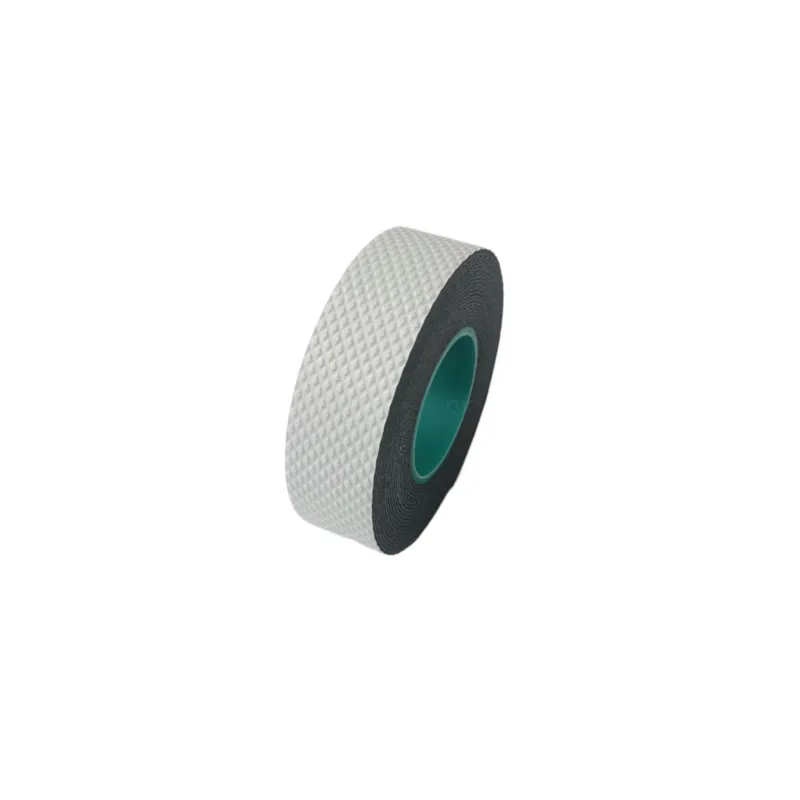Understanding Butyl Tape and Rubber Glue Applications and Advantages
In the world of adhesives and sealants, butyl tape and rubber glue stand out for their unique properties and versatility. These two products have become essential in various industries and applications, from construction to automotive, providing reliable bonding and sealing solutions.
What is Butyl Tape?
Butyl tape is a type of adhesive tape made from butyl rubber, a synthetic rubber known for its excellent impermeability to water and air. Butyl tape typically comes in a roll and is characterized by its sticky, tacky surface that adheres well to various materials, including metal, wood, glass, and plastic. One of the most significant advantages of butyl tape is its ability to withstand extremes of temperature and weather conditions, making it ideal for outdoor applications.
Butyl tape is often used in roofing and construction to create watertight seals around joints and seams. It's also commonly applied in automotive and marine industries, where it is used for sealing windshields, windows, and other components that require a durable bond that can resist moisture. Moreover, butyl tape can be used in DIY projects, providing a simple and effective way to tackle various sealing and bonding challenges without needing specialized tools or skills.
What is Rubber Glue?
Rubber glue, on the other hand, is a versatile adhesive that can bond a wide range of materials, including rubber, leather, fabric, and more. This type of glue is formulated with a blend of rubber polymers, which gives it the flexibility needed to bond materials that may experience movement or stress. Rubber glue is particularly useful in applications where a strong, flexible bond is required, such as in the repair of rubber items like shoes, belts, or equipment.
One of the distinguishing features of rubber glue is its quick-drying capability. Users can often achieve a strong bond in a matter of minutes, making it an ideal choice for time-sensitive projects or repairs. Additionally, rubber glue is typically resistant to water and heat, enhancing its performance in challenging environments.
Applications of Butyl Tape and Rubber Glue
Both butyl tape and rubber glue serve vital roles across various industries.
1. Construction and Building Butyl tape is widely used in roofing applications, especially for sealing seams and flashing. It can also bond insulation materials and vapor barriers to enhance energy efficiency in buildings. Meanwhile, rubber glue is commonly used for bonding materials during construction, such as flooring, tiles, and fixtures.
butyl tape rubber glue

2. Automotive In the automotive industry, butyl tape is essential for sealing windows, windshields, and other parts that must remain waterproof. Rubber glue is also employed for repairing weather stripping, hoses, and various rubber components in vehicles.
3. Marine Applications Butyl tape is an excellent choice for boat building and repair due to its waterproof properties, ensuring seals remain intact even in harsh marine environments. Rubber glue adds versatility in attaching components and repairing equipment on boats.
4. DIY and Crafts For DIY enthusiasts, both butyl tape and rubber glue provide reliable solutions for various projects. From sealing windows at home to crafting with fabrics, these adhesives offer ease of use and efficiency.
Advantages of Using Butyl Tape and Rubber Glue
The advantages of butyl tape and rubber glue make them preferred choices for many users
- Durability Both products are designed to withstand the test of time, providing long-lasting bonds that resist environmental factors. - Water Resistance Butyl tape is especially noted for its impermeability, while rubber glue offers adequate water resistance for various applications.
- Easy Application Butyl tape is easy to apply as it comes in a roll, and rubber glue typically requires no special tools, making it accessible to all users.
- Flexibility Rubber glue's flexibility makes it suitable for bonding dynamic materials that experience movement, while butyl tape's adaptability ensures effective sealing on various surfaces.
Conclusion
Butyl tape and rubber glue are indispensable tools in various applications, offering versatility, durability, and ease of use. Whether in construction, automotive work, or DIY projects, understanding the strengths and applications of these products can help users select the right adhesive solution for their needs. As technology and materials continue to advance, the future of adhesive solutions like butyl tape and rubber glue looks promising, ensuring their continued relevance in numerous industries.
-
XIANGFAN Rubber Tape-Ultimate Solutions for All Your Insulation NeedsNewsJun.24,2025
-
XIANGFAN Rubber Tape-Protection for Industrial and Residential ApplicationsNewsJun.24,2025
-
XIANGFAN Rubber Tape: Superior Safety and Sealing for Demanding EnvironmentsNewsJun.24,2025
-
XIANGFAN Rubber Tape: Reliable Solutions for Every Electrical ChallengeNewsJun.24,2025
-
XIANGFAN Electrical & Industrial Tape: Powering Reliability Across IndustriesNewsJun.24,2025
-
XIANGFAN Electrical & Industrial Tape: Excellence in Every ApplicationNewsJun.24,2025
